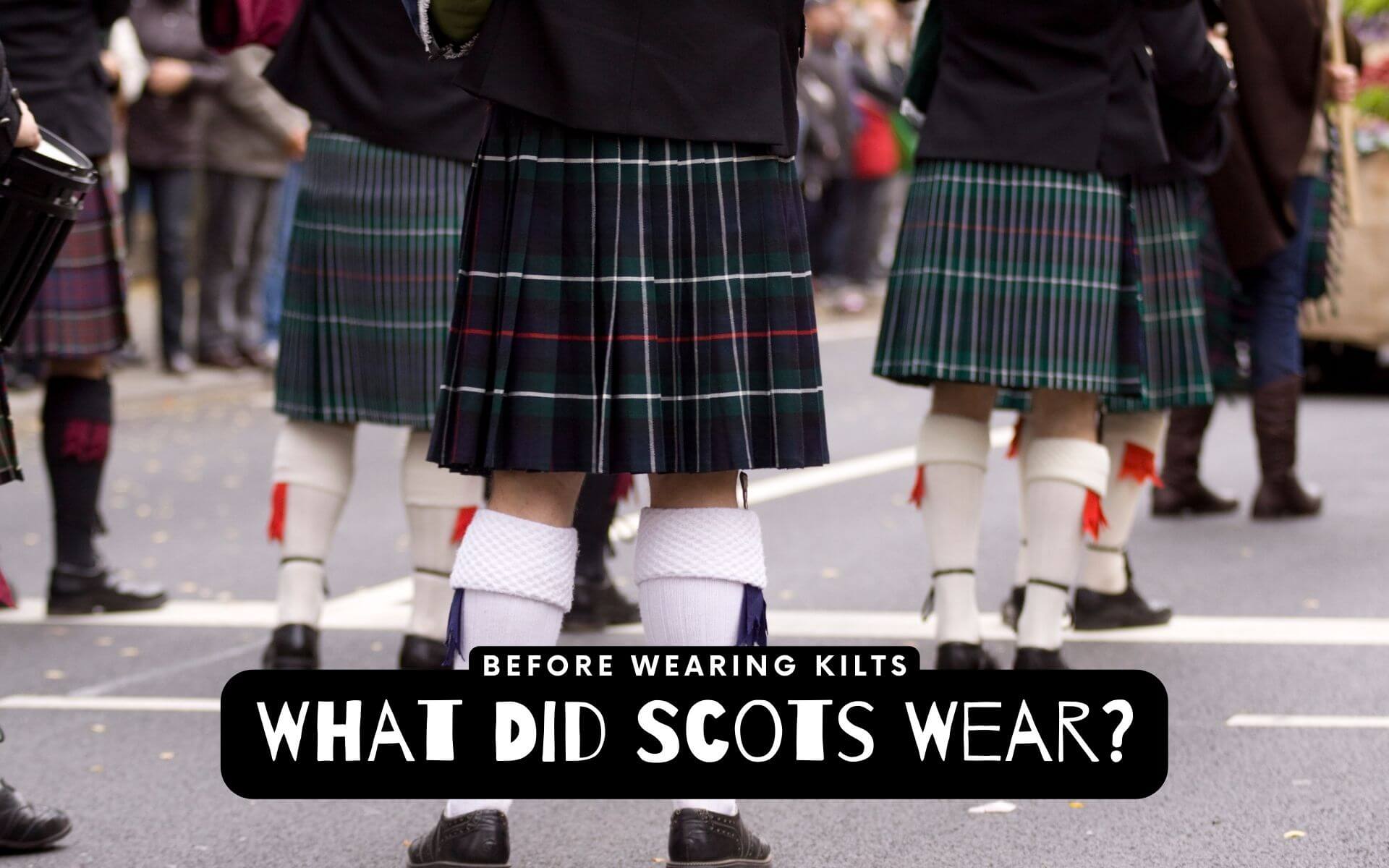Scots Wore What Before Kilts?
The kilt is among the most recognizable symbols of Scotland's rich cultural past, which is well renowned for being extremely rich. Before the kilt gained popularity, though, Scots wore a range of other outfits that were each distinctive and fascinating in their own right. Scottish clothing has a long and intriguing history that has been shaped by elements including location, climate, and cultural trends, ranging from simple woolen clothes in prehistoric times to the magnificent garb of the Medieval Ages. This post will examine the development of Scottish attire prior to the kilt and how various looks have influenced Scotland's diverse cultural heritage.
Early History;
Scottish history suggests that the oldest attire was composed of wool, leather, and fur, and was straightforward and functional. Although there are no surviving specimens, historians' accounts and ancient artwork let us imagine what these clothes would have looked like.
Scottish clothing started to take more cues from the larger Roman Empire during the Roman period of Scotland, which lasted from the first through the fifth centuries CE. Although certain Scottish tribes started wearing leggings and tunics in the Roman style, many Scots still wore their indigenous garb.
Middle Ages;
Scotland had developed into a unique political and cultural entity by the Middle Ages, with its own rulers, clans, and traditions. Around this time, Scottish clothing started to take on its own distinctive characteristics. For clothing, men often wore a wool tunic or jacket, hose (tight-fitting pants), and boots. Moreover, they might don a cloak or a plaid (a large piece of fabric draped over the shoulder).
Throughout the Medieval Ages, women's dress was likewise pretty straightforward. They wore a long woolen or linen dress underneath a tunic or surcoat. Also typical were head coverings.
It's worth noting that during this period, Scottish dress did not yet have the distinctive tartan patterns that we associate with it today. Instead, the colors and patterns of clothing were determined by the natural dyes that were available in the region.
16th Century;
Scottish clothing has developed into a more ornate and colorful style by the 16th century. This was partly brought about by the Renaissance, which introduced fresh concepts and aesthetics to Scotland from all around Europe.
The adoption of the belted plaid commonly referred to as the "great kilt," was one of the major changes that occurred during this time. This outfit was made of a long, pleated piece of woolen fabric (sometimes up to six yards long), which was draped over the body and had one end tied with a belt around the waist. The other end could be draped like a cloak over the shoulder.
The great kilt was a versatile garment that could be adapted to suit a wide range of weather conditions and activities. It was particularly popular among Highland clansmen, who used it as a kind of uniform to show their allegiance to their chief.
18th Century;
The kilt as we know it today continued to develop in the 18th century. Each clan had its own particular pattern, and tartan designs had grown increasingly conventional. Together with wool, other materials like silk and cotton were also used to make kilts.
The romanticization of Scotland by poets, artists, and writers during this time contributed in part to the rise in popularity of the kilt. It was worn by people all around Scotland, not just Highland clansmen, and it became a representation of Scottish identity and pride.
Conclusion;
In summary, Scottish clothing has changed over the years to become the recognizable design we see today. Scots have always dressed differently, in a variety of styles, and with a strong sense of tradition, from the utilitarian attire of antiquity to the lavish clothing of the Middle Ages and the belted plaid of the Renaissance. Although the kilt is unquestionably the most well-known and adored representation of Scottish attire, it's crucial to recognize the varied and illustrious past of Scottish clothes. These clothes still play a significant role in defining Scottish identity today since they tell a tale about Scotland's past, its people, and its cultural heritage.

















Comments